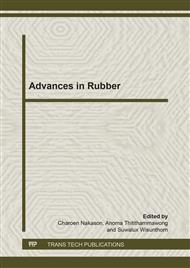p.7
p.11
p.15
p.20
p.24
p.30
p.34
p.41
p.45
Resilience of Rubber-Based Intercropping System in Southern Thailand
Abstract:
Many farmers have understood and had direct experience with resilience in a rubber-based intercropping system under risks and uncertainties of world economy and government policies. However, quantitative studies to examine and confirm such results are still limited.This study found some hidden values of economic resilience in the rubber-based intercropping system which could be of great use to future agricultural development. Results were drawn from 5 rubber-based intercropping plots in Southern Thailand by building three scenarios: 1) rubber price during 2017-2021 is lower; 2) wage of farm labor during 2013-2021 is higher; and 3) farmers reduce risks and uncertainties by cutting intercropped timber and/or selling products from rubber-based intercrops. Results show that 3 plots will have a high level of resilience of margin (income from plots after deducting operation cost) while one plot will have a medium level and another will have a low level. Main factors affecting resilience levels will be: quantities and kinds of intercropped timber, appropriate cutting period of timber, efficiency in plot management by farmers to increase yields of intercropped fruit trees, and adaptation of other kinds of products in the plots to increase household income. High proportion of off-farm income will also be useful in reducing some negative effects from lower rubber priceand higher wage of farm labor.
Info:
Periodical:
Pages:
24-29
Citation:
Online since:
November 2013
Authors:
Price:
Сopyright:
© 2014 Trans Tech Publications Ltd. All Rights Reserved
Share:
Citation:


